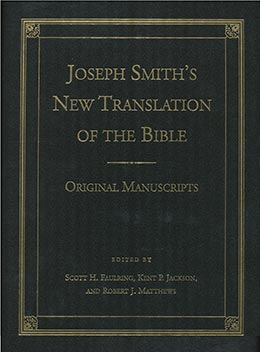Joseph Smith's New Translation of the Bible
Original Manuscripts

About the Book
The latter-day restoration of the gospel included the restoration of much significant truth to the Bible. It brought about the restoration of biblical history that had been lost and the restoration of biblical texts that had been changed or omitted or were in need of clarification. More important, it included the restoration of biblical doctrine that had been either removed, distorted, or simply misinterpreted by a world that did not enjoy the fulness of the gospel.
Shortly after the Church of Jesus Christ of Latter-day Saint was organized, the Prophet Joseph Smith was instructed by the Lord to undertake a careful reading of the Bible to revise and make corrections in accordance with the inspiration that he would receive. The result was a work of profound significance for the Church that included the revelation of many important truths and the restoration of many of the “precious things” that the Book of Mormon prophet Nephi had foretold would be taken from the Bible (1 Ne. 13:23–29). In June 1830 the first revealed addition to the Bible was set to writing. Over the next three years, the Prophet made changes, additions, and corrections as were given him by divine inspiration while he filled his calling to provide a more correct translation for the Church. Collectively, these are called the Joseph Smith Translation (JST), a name first applied in the 1970s, or the New Translation, as Joseph Smith and others in his day referred to it.
ISBN 1-59038-328-1
Published in 2004